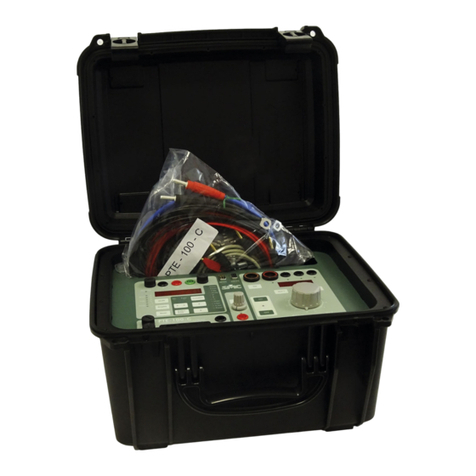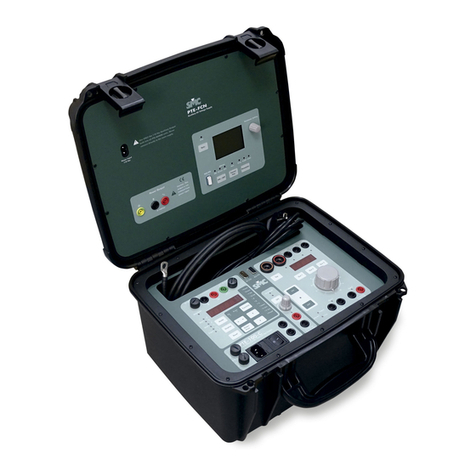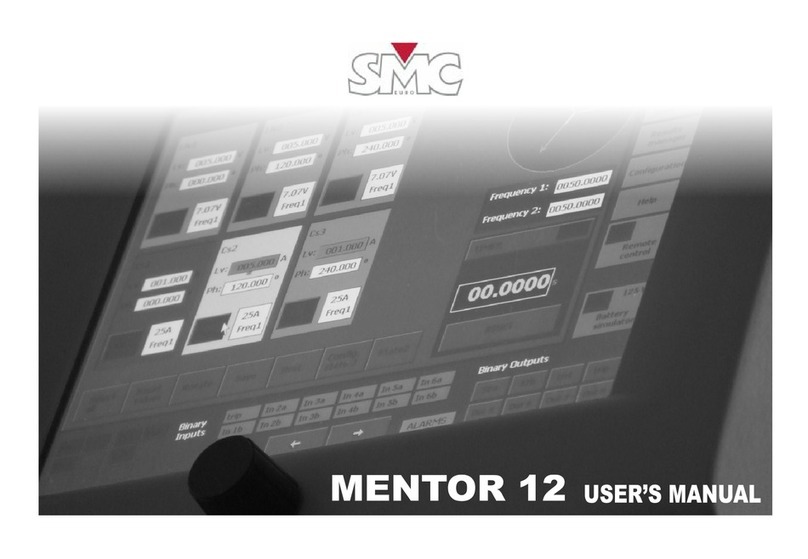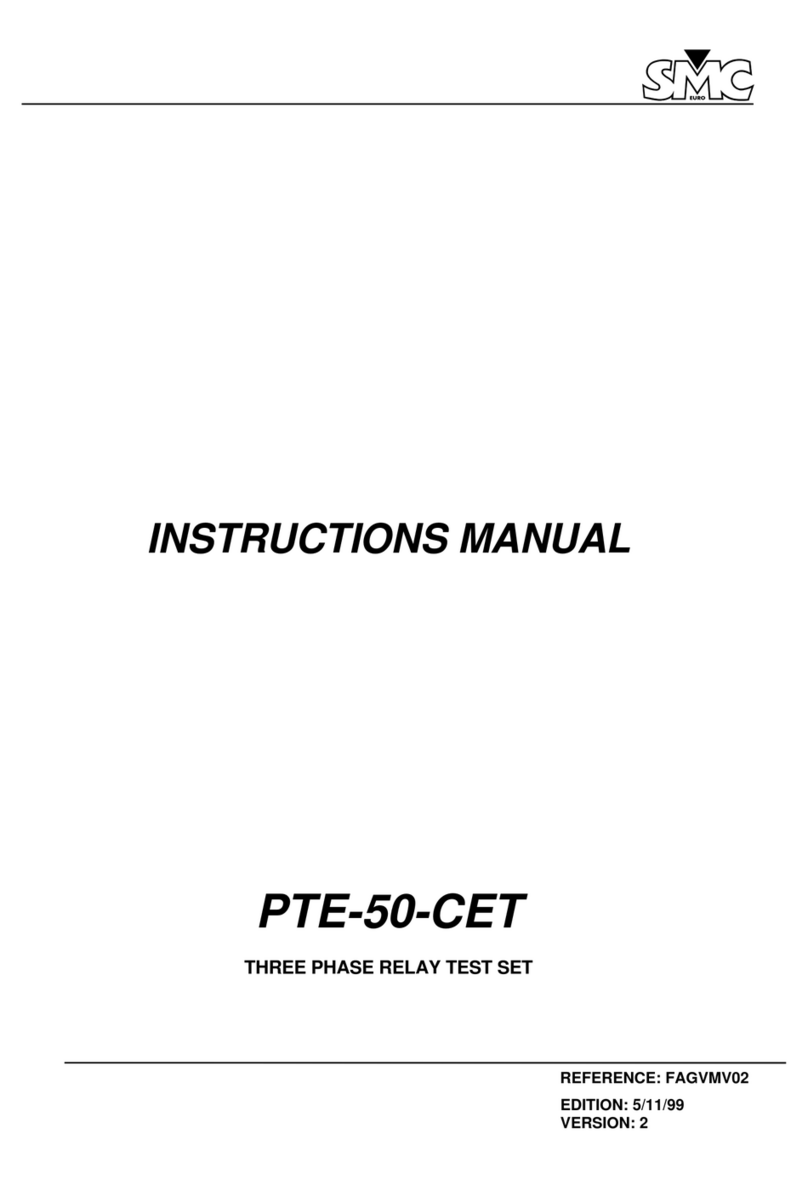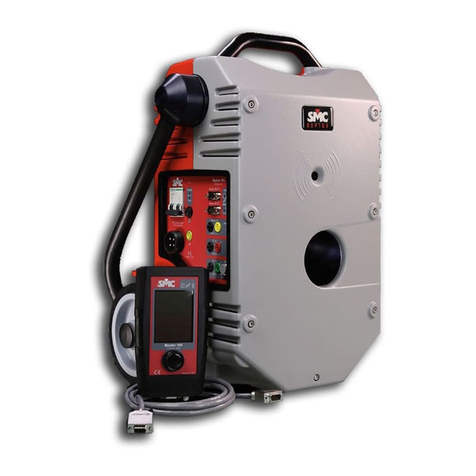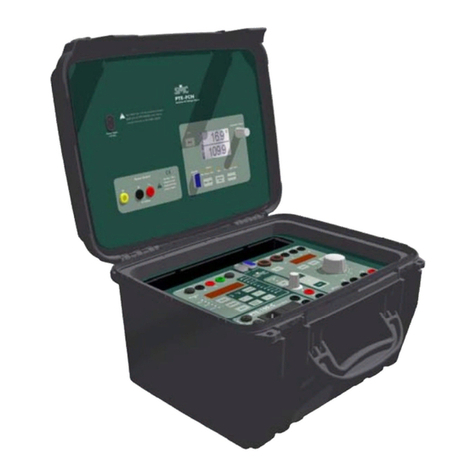
PTE-300-V
Sheet 3
3.4.1.1. Reset.................................................................................................................. 25
3.4.1.2. Print ................................................................................................................... 25
3.4.1.3. RS-232 serial port control ................................................................................... 25
3.4.1.4. SYNCHRONIZATION......................................................................................... 26
3.4.1.5. MASTER/SLAVE control..................................................................................... 26
3.4.2. OPTIC INDICATORS ........................................................................................................ 26
3.4.2.1. RS-232 port indicator.......................................................................................... 26
3.4.2.2. SYNCHRONIZING REFERENCE indicators ....................................................... 26
3.4.2.3. Monitor state indicator ........................................................................................ 27
3.4.3. CONNECTORS AND FUSES............................................................................................ 27
3.4.3.1. Monitor input taps............................................................................................... 27
3.4.3.2. Auxiliary output to start an external timer ............................................................ 27
3.4.3.3. RS-232 connector............................................................................................... 28
4. FUNCTIONS: USE AND DESCRIPTIONS........................................................................................ 29
4.1. FREQUENCY SECTION............................................................................................................. 29
4.1.1. INITIAL STATUS............................................................................................................... 29
4.1.2. FUNCTION MODE SELECTION........................................................................................ 29
4.1.2.1. NORMAL FREQUENCY MODE (F).................................................................... 29
4.1.2.2. SLIP FREQUENCY MODE (∆F) ......................................................................... 30
4.1.3. DYNAMIC TEST: SELECTING FREQUENCY RAMPS...................................................... 30
4.1.4. DYNAMIC TEST: START THE SELECTED RAMP............................................................ 31
4.1.5. DYNAMIC TEST: STEP TO 2ND VALUE ............................................................................ 31
4.1.6. TTL AUXILIARY OUTPUT: CHARASTERISTICS AND APPLICATIONS............................ 31
4.2. LEVEL SECTION: OUTPUT POWER.......................................................................................... 31
4.2.1. INITIAL STATUS............................................................................................................... 32
4.2.2. OUTPUT MODE SELECTION (V/I).................................................................................... 32
4.2.3. OUTPUT RANGE SELECTION......................................................................................... 32
4.2.4. REFERENCE SOURCE SELECTION................................................................................ 32
4.2.5. OUTPUT VALUES SELECTION........................................................................................ 33
4.2.6. OUTPUT CONTROL: ON/OFF AND ALARMS................................................................... 33
4.2.7. DYNAMIC TESTS: STEP TO 2ND VALUE.......................................................................... 34
4.3. PHASE ANGLE SELECTION...................................................................................................... 34
4.3.1. PHASE ANGLE SENSE.................................................................................................... 34
4.3.2. DYNAMIC TESTS: STEP TO 2ND VALUE.......................................................................... 36
4.3.3. USE OF EXTERNAL REFERENCE INPUT ....................................................................... 36
4.4. GENERAL CONTROL SECTION ................................................................................................ 37
4.4.1. SIGNAL MONITOR ........................................................................................................... 37
4.4.2. USE OF THE MASTER/SLAVE PRESS KEY .................................................................... 37
4.5. COMMUNICATION IN BUS-PTE................................................................................................. 38
4.5.1. EVENTS IN BUS-PTE....................................................................................................... 38












